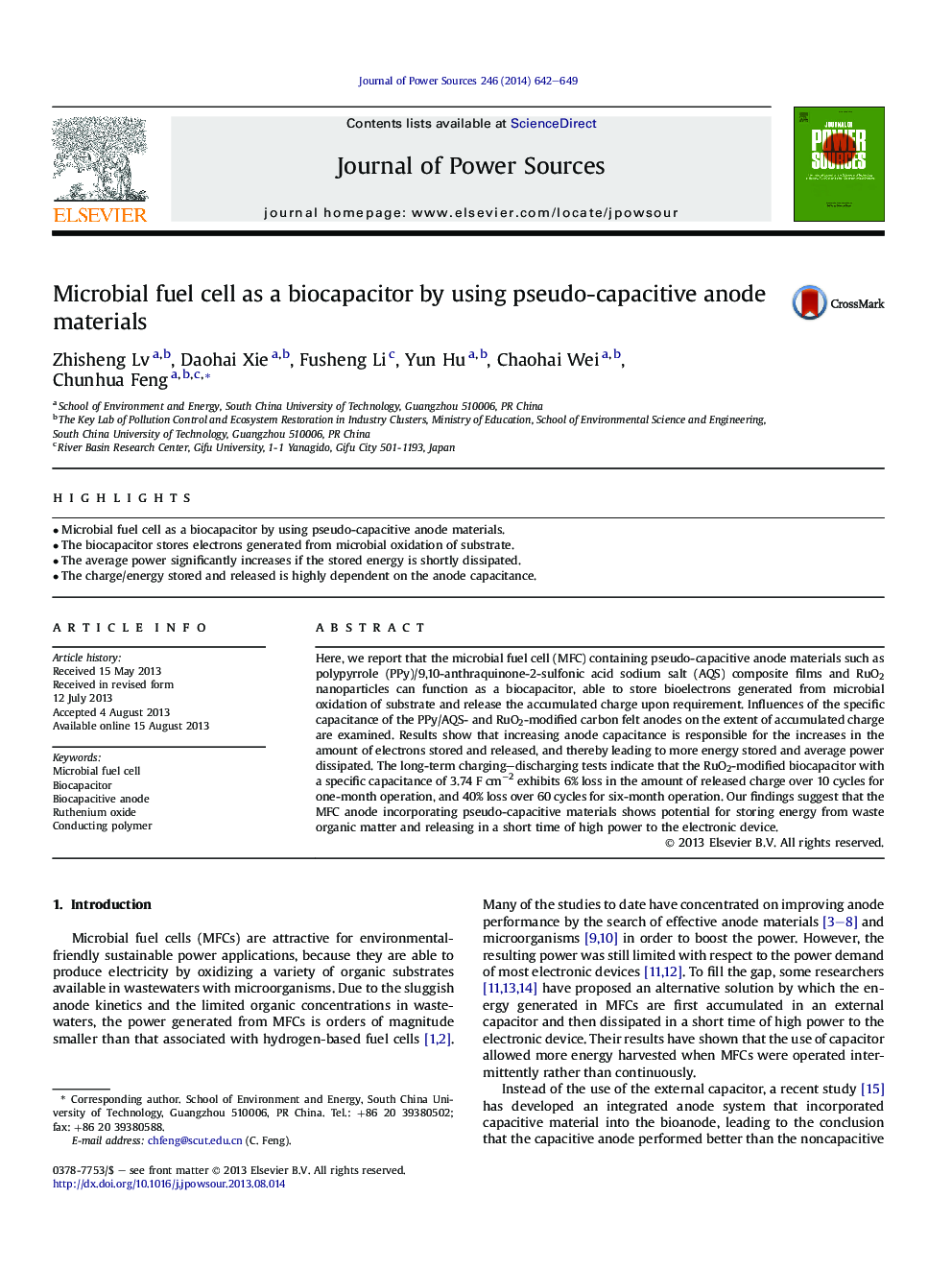| Article ID | Journal | Published Year | Pages | File Type |
|---|---|---|---|---|
| 1284259 | Journal of Power Sources | 2014 | 8 Pages |
•Microbial fuel cell as a biocapacitor by using pseudo-capacitive anode materials.•The biocapacitor stores electrons generated from microbial oxidation of substrate.•The average power significantly increases if the stored energy is shortly dissipated.•The charge/energy stored and released is highly dependent on the anode capacitance.
Here, we report that the microbial fuel cell (MFC) containing pseudo-capacitive anode materials such as polypyrrole (PPy)/9,10-anthraquinone-2-sulfonic acid sodium salt (AQS) composite films and RuO2 nanoparticles can function as a biocapacitor, able to store bioelectrons generated from microbial oxidation of substrate and release the accumulated charge upon requirement. Influences of the specific capacitance of the PPy/AQS- and RuO2-modified carbon felt anodes on the extent of accumulated charge are examined. Results show that increasing anode capacitance is responsible for the increases in the amount of electrons stored and released, and thereby leading to more energy stored and average power dissipated. The long-term charging–discharging tests indicate that the RuO2-modified biocapacitor with a specific capacitance of 3.74 F cm−2 exhibits 6% loss in the amount of released charge over 10 cycles for one-month operation, and 40% loss over 60 cycles for six-month operation. Our findings suggest that the MFC anode incorporating pseudo-capacitive materials shows potential for storing energy from waste organic matter and releasing in a short time of high power to the electronic device.
